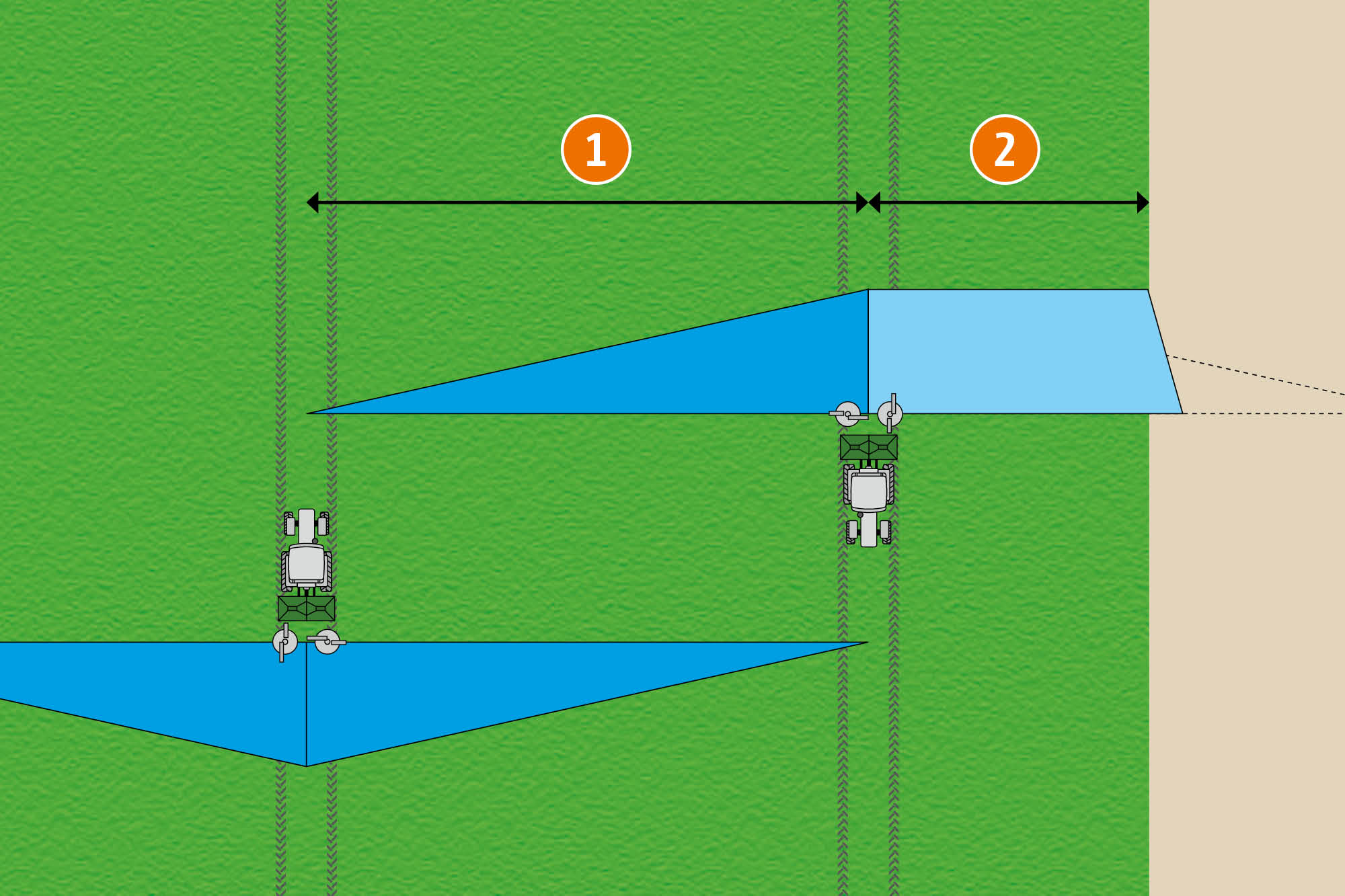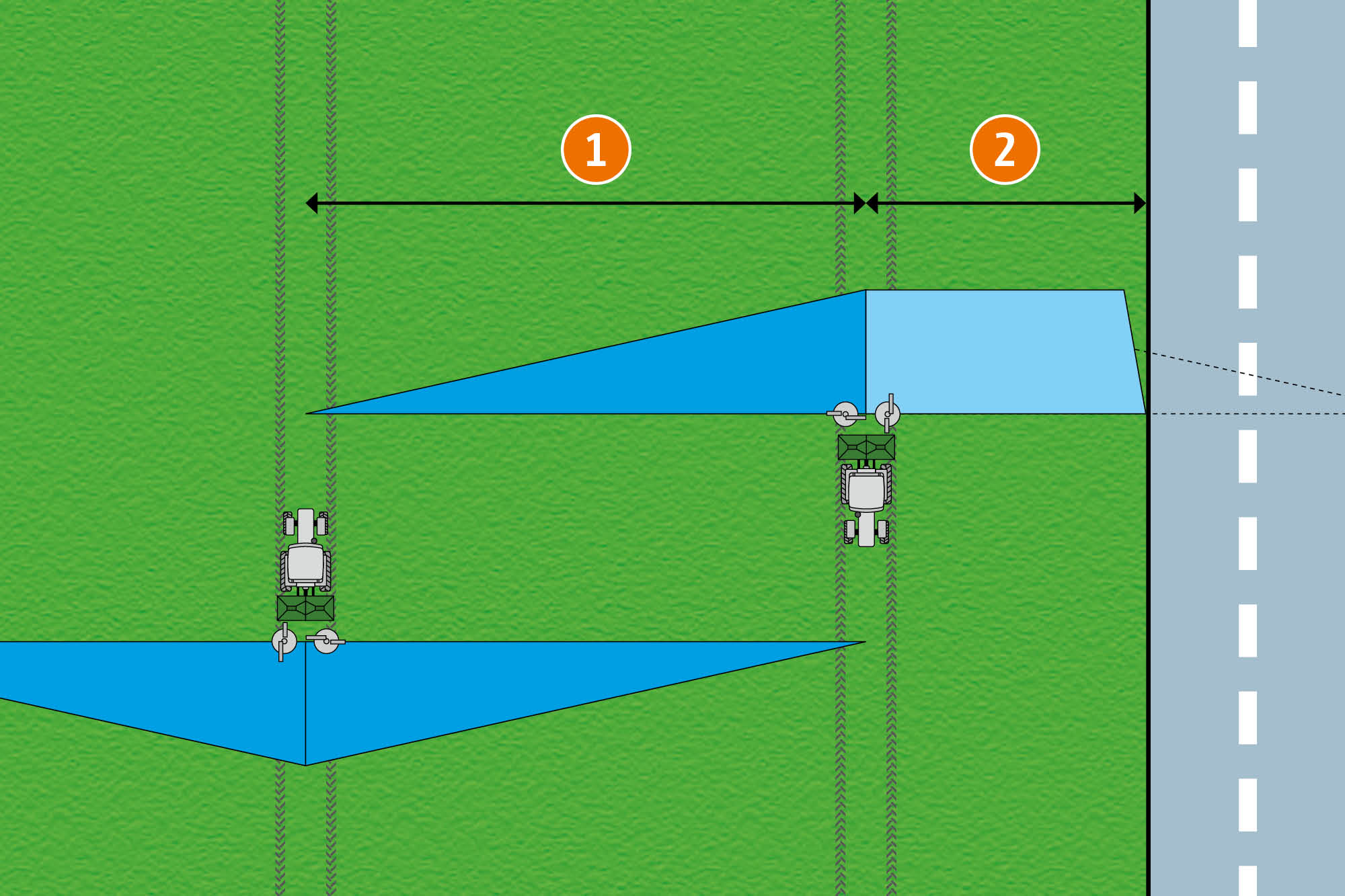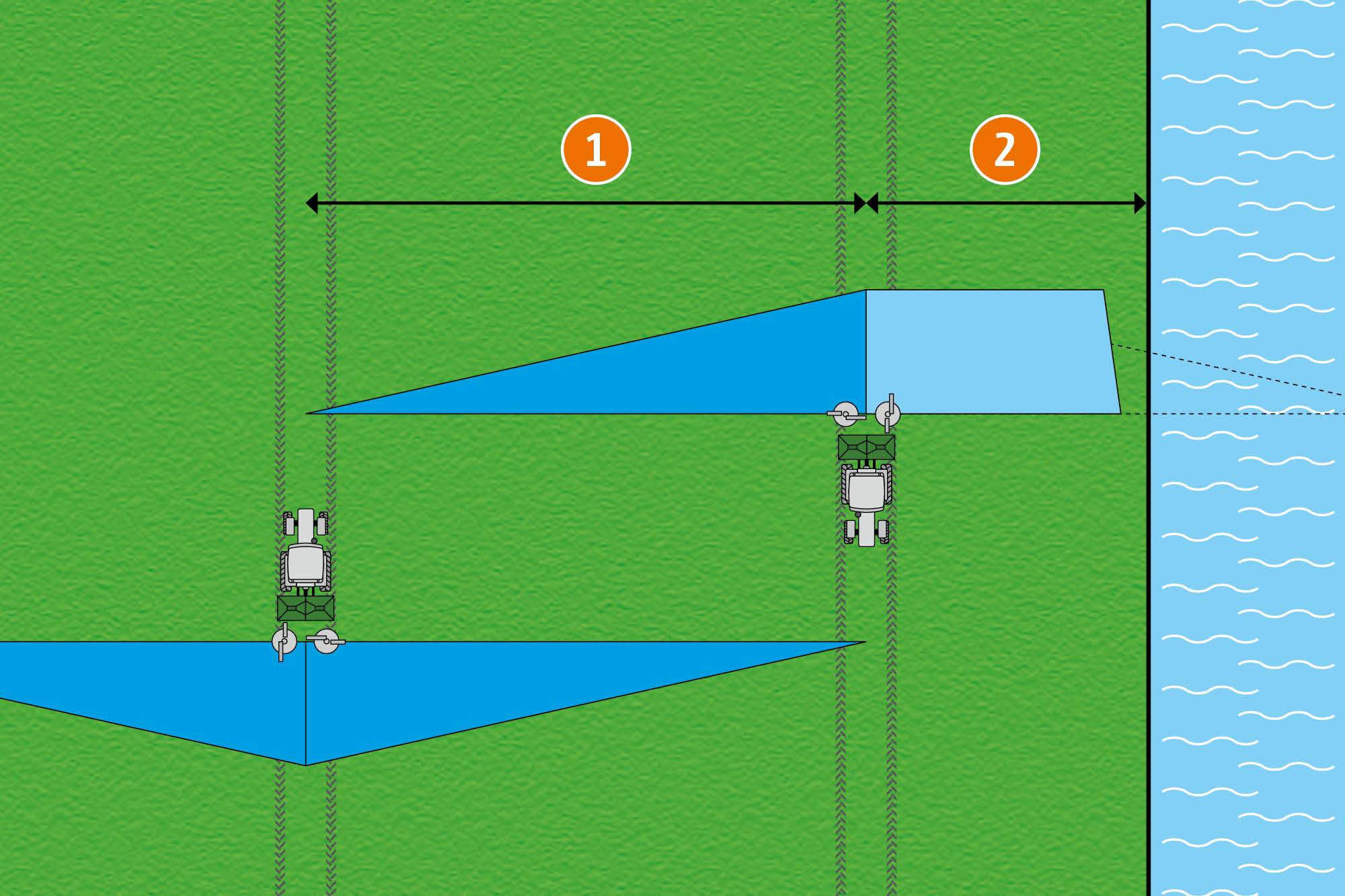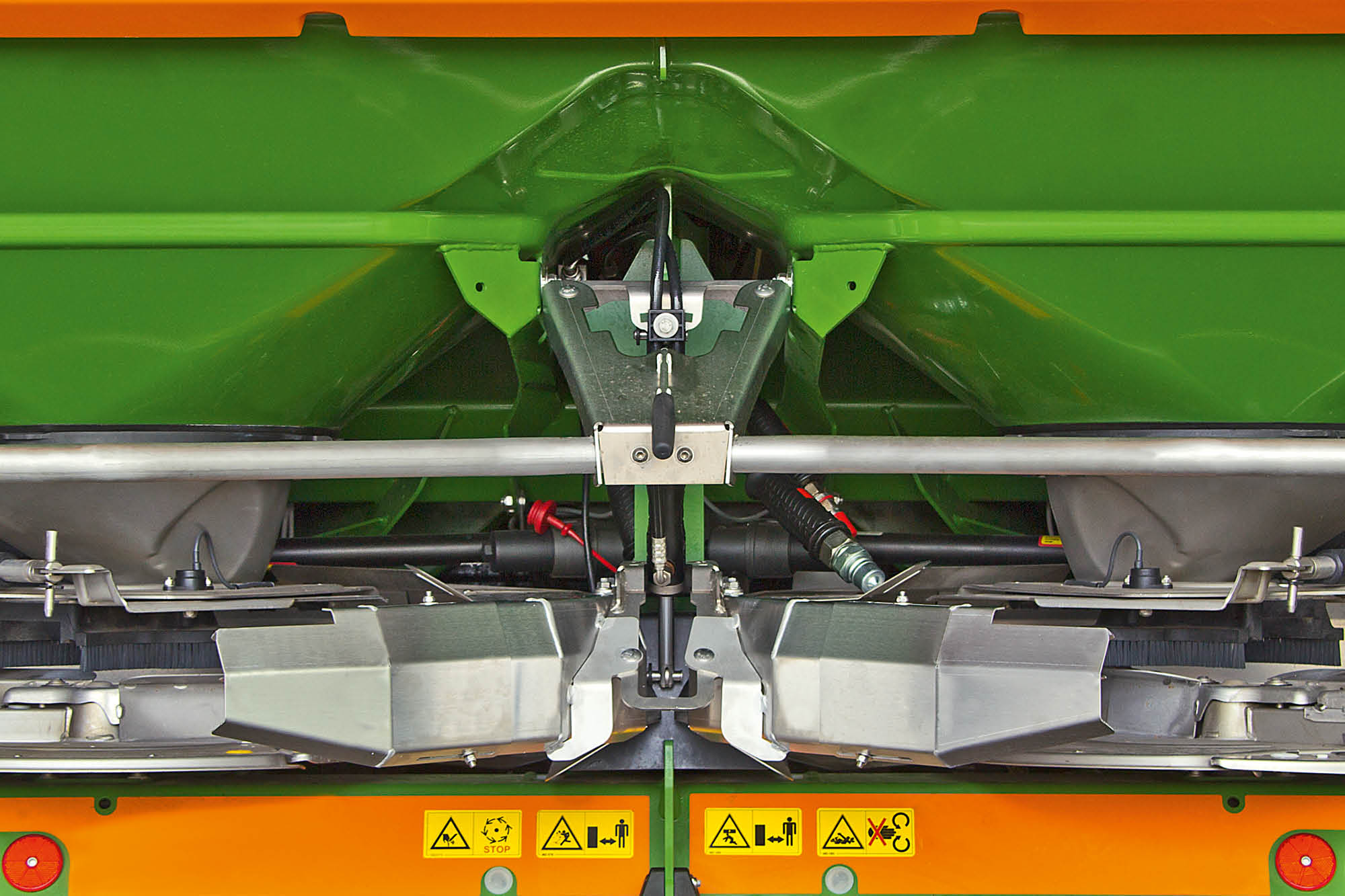Border spreading systems
Effective and precise – spread only where the fertiliser will benefit plants
Side spreading (yield-oriented) with Limiter V or V+
The adjacent field is an area which is used agriculturally. In this case it is tolerable for a small quantity of fertiliser to be thrown over the field boundary. The full target rate is applied right up to the field boundary.
Border spreading (environmentally oriented) with Limiter V or V+
If the field is next to a road or a cycle path, no fertiliser may be thrown beyond the field boundary. In this case, the throwing distance is adjusted in combination with the shutter slide.
Water course spreading (environmentally oriented) with Limiter V or V+
If there is a body of water directly at the edge of the field, a defined distance to the water must be maintained when fertilising according to the fertiliser regulations. For this purpose, the throwing distance is further reduced in combination with the shutter slide.
Border spreading with the border spread deflector
If the first tramline is situated at the field’s edge, border spreading (environmentally orientated) is then achieved by utilising the half-side shut-off of the spread fan. No fertiliser goes beyond the boundary of the field, and optimum fertilisation takes place inside of the boundary.
Bed spreading via bed spreading deflector on both sides
AMAZONE offers the bed spreading deflector for spreading special crops in beds on the left and right of the tramline. It keeps the track virtually free from fertiliser. The bed spreading deflector is actuated manually or, as an option, hydraulically from the tractor cab.





